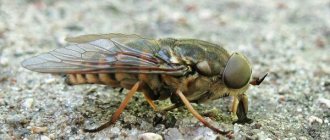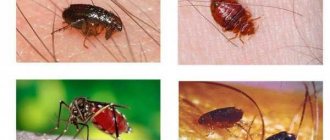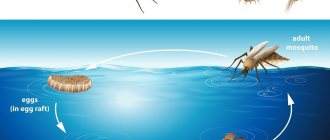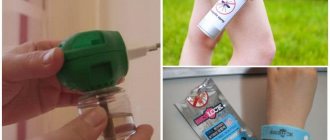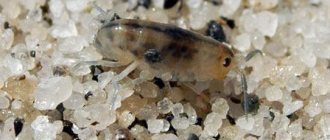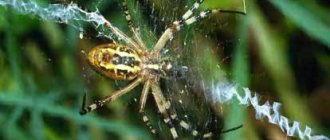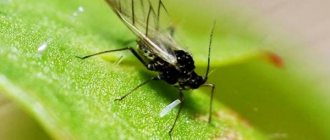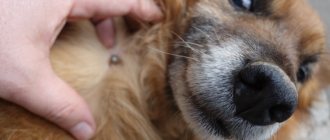In the article presented to your attention we will talk about ectoparasites. The blood of warm-blooded animals is a natural food for these representatives of living nature.
Blood-sucking insects are designed in such a way that, depending on their living conditions, they search for an object to attack by the smell of skin secretions, body temperature or appearance.
We encounter blood-sucking insects both outside the house and on the street: in the forest we are attacked by mosquitoes, midges, ticks, gadflies and horseflies, and at home by bedbugs, lice and fleas.
In this material, we tried to cover in detail the means of protection against blood-sucking insects, talk about the danger to which our health is exposed if we ignore dangerous parasites or demonstrate resistance to their bites.
The itching caused by the bites of blood-sucking insects is explained by the presence of special enzymes in their saliva that thin the blood and prevent it from clotting. In some people it provokes allergic reactions, including death. Most often, the bite site becomes swollen and itchy, that is, itchy.
Blood-sucking insects often become carriers of dangerous diseases - plague, encephalitis, typhoid fever, malaria and others.
Deer fly
Deer fly, also known as moose fly, bloodsucker fly, deer tick, moose louse and moose tick. The population of this blood-sucking animal is directly related to the number of deer and elk, although it parasitizes not only them, but also smaller animals - foxes, badgers, dogs and others, even birds. She does not shun human blood either. In our country, the bloodsucker fly prefers European regions up to the Urals. It is she who carries such a dangerous livestock disease as anthrax.
Deer flies choose their prey based on movement. They only attack adults. Small children may not be afraid of them. Hunting season is autumn, and only when the weather is dry and windless.
The bloodsucker remains a fly until the moment it clings to the skin of the victim with its prickly legs. Immediately after this, she sheds her wings and becomes like a tick. It is very difficult to tear it away from the body, but it is necessary to do this, since after one individual a representative of the opposite sex flies in with the aim of settling on the found victim and laying eggs. For the first 30-60 minutes, blood-sucking insects crawl, looking for the most secluded place with close blood vessels, and only after that they begin to eat.
Bloodfly bites are invisible, but they are sharp and painful, and itching appears only on the second day. At the same time, a small hard papule appears on the affected area, which lasts for two to three weeks.
The best protection against blood-sucking flies is special clothing with a hat, as well as appropriate repellents.
Bloodsuckers
Representatives of two-winged insects. They are found in all corners of the world (except Antarctica). Highly specialized blood-sucking organisms that infect only warm-blooded animals. The species is viviparous - females give birth to several mature larvae.
They have a fairly flat but wide body and tenacious limbs. Almost all types of insects do not have wings at all.
As you can see, there are many “vampires” who want to drink blood. Therefore, to prevent such situations before going on vacation, it is important to take care of safety: purchase repellents, remedies against allergies and inflammation.
Popular folk remedies for domestic bloodsuckers
The following representatives of blood-sucking insects are found in residential buildings: bed bugs, lice and fleas. Note that it is quite difficult to get rid of these parasites.
Firstly, because they are most active at night and attack unnoticed, most often when a person is sleeping.
Secondly, because they are very small in size and have a protective coloring.
Thirdly, they are designed by nature itself in such a way that they cannot exist without a person or his warm-blooded pet (cat, dog, budgie, etc.) - the instinct of procreation pushes them towards a human home.
Fourthly, some of them can live in basements and attics, entering the apartment only to drink blood and then go home.
Hence the conclusion - it is extremely difficult to defeat bedbugs, fleas and lice. It’s simpler and more correct to prevent them from appearing in the apartment at all. How to do it?
From time immemorial, our ancestors used various herbs to repel insects. The smell of wild rosemary, wormwood, tansy, chamomile, and lavender is hated by parasites, so it was recommended to place flowers, leaves and branches of these plants under sheets and mattresses.
Home hygiene was maintained by adding natural or synthetic vinegar, salt, and herbal decoctions to the water for dusting.
They even practiced enchanting the home and other witchcraft rituals, for example, collecting harmful insects that had settled in the house and throwing them into the coffin of the deceased or onto an ice floe during freeze-up. It was believed that, following their brothers, the rest of the domestic blood-sucking insects would leave the home.
Lice
There are several types of lice - head lice, clothing lice, pubic lice. The latter look like a small crab, are localized on the pubis, are rare - among people leading a depraved lifestyle, homeless people. Clothes live in human underwear, bedding, and bite more often at night. After insect bites, numerous small red spots and minor swelling appear. Head lice are more likely to attack children. They live on the head. They are the most common parasite.
Symptoms of head lice:
- severe itching;
- spots on the skin, inflammation;
- dermatitis from bites with prolonged infection;
- the presence of nits on the hair.
Action must be taken immediately, as insects multiply quickly. They use folk, professional remedies. In the absence of treatment for pediculosis, the development of dermatitis, nervous system disorder, and deterioration in general health are observed.
Chemicals against blood-sucking insects
Currently, pharmacies sell insecticidal products that successfully destroy bedbugs, fleas and lice - “Chlorofos”, “Dichlorvos”, “Metafos”, “Karbofos”, “Raptor”, “Delta ...” or “Lambda Zone”, “Combat” , “Executioner”, “Sinuzan” and others. The entire room is sprayed or fumigated with them. The access to free air should be blocked during processing. There should be no people in the room for at least a couple of days, since all of the drugs listed are very toxic.
If it is impossible to destroy the multiplying parasites on your own, it is recommended to use the help of specialists from sanitary and epidemiological stations, which are located in every city.
Flea
Fleas can infect us with more than 20 diseases, including plague, tularemia, typhus and hepatitis. Rats are primarily carriers of pathogens. Also dangerous are domestic dogs and cats who bring fleas from the street. If birds live in the attic of a house, then they can become sources of infection.
The flea is not easy to notice: it is very small (1-2 mm) and has the ability to jump instantly and far.
You can get rid of fleas by limiting their entry into the house. If a dog or cat goes outside, it should be wearing a special anti-flea collar. Bars is also effective. A few drops applied to the animal’s withers will protect your pet, and therefore you, from fleas.
The smell of vanilla against gnats
The sweet and delicate aroma of vanilla is pleasant to our sense of smell, but completely intolerable to the midges. Prepare a vanilla solution and pour it into a spray bottle. Spray the liquid on yourself and your child from time to time, and no dipterans will encroach on you.
Even synthetic vanillin, sold in grocery stores in the baking spice section, will work. Dissolve one sachet in hot water and pour into a bottle. It's very simple and convenient.
You can make a solution from natural vanilla. To do this, cut the pod and scrape out the seeds along with the inner pulp. Then place the seeds with pulp in boiling water and place in a water bath. After half an hour, remove from heat and place in a warm place to infuse. After two hours, the solution will be ready for use. A glass of water requires 6-8 pods. The disadvantage of this product is its color - it is very dark and leaves marks on clothes. This infusion is recommended for adding to the bath while bathing a child. A baby who smells of vanilla can sleep peacefully in a stroller on the balcony or in the garden - mosquitoes and other blood-sucking insects won’t even fly up to him, let alone bite him.
Bed bug
Bed bugs are not suspected of spreading any diseases. However, they should be feared because of the great discomfort they create for people living in their chosen territory. Adult bedbugs and their larvae feed on human blood. They do not attack animals, since their thick fur prevents them from getting close to the skin. Young children, if there are any in the house, are most often at risk. If they are not there, then everyone else is. It all depends on the size of the bedbug population and their appetite.
During the night, the bug feeds repeatedly. It crawls over a person’s body, leaving characteristic bite trails. After the anticoagulant he injected stops working, the wounds begin to itch.
When morning comes, the bug hides in the joints of furniture parts, in bed linen, books, cracks in electrical appliances and other hard-to-reach places.
If you don't know what bedbugs look like, you may not notice them. These insects look like flat brown peas. The photograph shows what bedbugs look like, but it is a strong magnification. Their actual size is up to 4 mm. It is very difficult to understand that this is an insect and not just a dirty spot. Neither his head nor his paws are visible. A bug that has fed on blood greatly increases in size.
Getting rid of bedbugs is difficult. Even leaving the apartment for a long time is unlikely to help, since these bloodsuckers are capable of falling into suspended animation for several months and waking up when their owners return.
Domestic cockroaches are considered the natural enemies of bedbugs, but it’s up to you to decide whether to get them or not.
To prevent bedbugs from settling in your apartment, it is necessary to maintain strict home hygiene - regularly carry out wet cleaning, vacuuming, boiling and ironing bed linen, as bedbugs love to lay eggs in the folds of sheets, duvet covers, pillowcases and mattresses. It is advisable to place fresh herbs in closets and beds every year - wild rosemary, wormwood, tansy, calamus, wheatgrass roots and pyrethrum chamomile. If at least one bedbug is detected, all items in the room should be treated as soon as possible with ammonia, vinegar, turpentine, kerosene, acetone or denatured alcohol. Domestic blood-sucking insects cannot tolerate these odors. They also do not tolerate sunlight, so try to place pillows and mattresses on the balcony more often in the summer. If at least one bug appears, then during such an assault it will not linger in your house, much less leave offspring, but will look for another, quieter haven.
Bedbugs get into apartments along with furniture, books, things brought from vacation, etc. If there were bedbugs in the hotel, then there is a high probability that they will get into suitcases and bags. In addition, bedbugs enter apartments through ventilation openings.
Mite
Forest ticks are especially dangerous for residents of most regions of Russia. Although their bites are not painful, they are carriers of a host of serious illnesses - Lyme disease, tick-borne encephalitis, hemorrhagic fever and borreliosis.
Insect activity increases sharply from late spring to the beginning of hot summer days and in autumn until frost.
Ticks hide in tall grass and jump onto clothing. They move from bottom to top, looking for exposed areas of the body, so trousers should be tucked into socks and a shirt into the belt. Long sleeves and collars should be buttoned, and there should be a scarf or hood on the head, or better yet, both.
It is not easy to spot a tick. It is very small - up to 2 mm, but on light-colored clothes it is clearly visible as a black speck.
When going to the forest, you need to treat your skin and clothing with a special repellent against ticks, and then, after about an hour, repeat the procedure.
Upon returning home, it is advisable to immediately examine yourself. Favorite places for insects are behind the ears, in the groin, under the arms and on the back of the head.
If a tick is found, it must be removed as quickly as possible without tearing off the head. It is in the salivary glands that bacteria that cause diseases are contained.
Pull out the tick with special tweezers or a thread loop.
Currently, forests and popular recreation areas are treated with special anti-tick agents before the start of the summer season, so when going into nature, try to stay close to places equipped for tourists and do not walk far from the paved paths.
Ticks are a nuisance not only to people, but also to animals. After each walk, carefully inspect your pets for ticks. Against attacks by blood-sucking animals, apply a few drops of the universal remedy “Bars” to the withers and along the spine. It is considered one of the best for fleas and ticks.
Signs of contact with parasites
To understand who regularly attacks: a bug, beetle, louse or mosquito, you need to study the symptoms characteristic of bites of certain insects:
Bedbug bites
Bedbugs attack in swarms, leaving multiple bites. The reaction to the secretory fluid injected by parasites may be different for each person: red dots or extensive redness. Itching is almost always present.
The pest leaves a chain of 3-7 such bites, piercing the skin in several places
If sensitivity is high, the skin in the affected areas swells slightly. Having bitten, the bug moves further along the body. As a result, a kind of path of red spots is formed. The insect bites on open and least hairy areas of the body: arms, legs, sometimes the stomach or back, if the owner is not covered with a blanket.
How fleas bite
House fleas often leave similar trails of several bites. Upon contact with these parasites, redness occurs, in the center of which there is a red (bloody) dot. A distinctive feature of a domestic flea bite is a wound that takes a long time to heal. Itching is also present. These insects attack any part of the body.
Fleas jump 1 meter in height. They bite people mainly on the legs.
Symptoms and signs of lice
Lice leave multiple bites. They are small red spots that are localized in large quantities in different areas except the head. On some, dried blood remains at the site of the puncture of the skin, it looks like a dark dot in the center of the spot.
They cause itching on the skin, an allergic reaction, redness, small ulcers, and bites take a long time to heal.
How to recognize a mosquito bite
Many people know about the symptoms of mosquito bites. Almost always, these parasites leave behind redness, sometimes of considerable size (several centimeters). A small, colorless bump remains in the center of the bite. However, with low sensitivity, often just a red dot remains. A typical reaction to contact with mosquitoes is itching.
To understand whether this is the same parasite that residents suspected of attacks, it is recommended to examine the affected areas of the skin and correlate what you see with the signs of bites of certain insects. A characteristic sign of a parasite bite is itching and redness.
Mokrets
These tiny vampires are carriers of tularemia, Crimean-Congo hemorrhagic fever and filariasis. Midge midge is the smallest (from 1 to 4 mm) of the blood-sucking insects found in Russian latitudes. There are especially many of them in taiga forests and tundra. There were cases when small midges ate to death a slightly tipsy person who had fallen asleep among the trees.
The blood of warm-blooded animals is food for sexually mature females. Since all phases of midge development take place in water, those who are located near fresh bodies of water with stagnant water are most likely to become victims of their bites.
Repellents and vegetable oils with a strong and pungent aroma repel midges very effectively. When choosing a victim, biting midges rely on the smell of skin secretions.
The bite of these blood-sucking representatives is quite painful, since the midges do not pierce the skin, as mosquitoes do with their long proboscis, but bite through with jaws that look like two sharp stilettos.
Lice
You can catch lice in any public place - on a bus, on a train, at work, in a hotel, etc. However, getting rid of these bloodsuckers is not as difficult as getting rid of bedbugs or fleas.
Three types of ectoparasites - head louse, pubic louse and body louse - cannot live without a person and without his blood. A few days of starvation are enough, and the adults die. Another thing is their larvae, nits. They may not enter the adult stage for a month, but under favorable conditions they turn into adults in 5 days.
Lice, or pediculosis, is a so-called social disease of the poor. The reason is that lice are a consequence of non-compliance with personal hygiene rules. Dirty clothes, worn without changing, and an unclean body are two factors that contribute to the development of head lice. Epidemics of typhus and relapsing fever are due precisely to lice, which transferred infected blood from infected people to healthy ones.
An adult louse (photo of it in front of you) cannot be larger than 4 mm. The nit is 4 times smaller. Nits attach to hair or fibers of fabric.
Lice and their larvae cannot tolerate temperatures below -22 degrees Celsius and above +44, so they are removed from clothing by boiling or ironing with a hot iron.
Lice are removed from hair using both folk and pharmaceutical remedies. Spinosad is recommended for small children over 4 years old; Ivermectin and Permethrin are recommended for adults. The last two destroy not only lice, but also other ectoparasites, including fleas.
The pubic, body and head louse that parasitizes humans (a photo of hair infected with nits is presented in our article) does not come into contact with domestic and wild animals and does not know how to hide as skillfully as a bug. When separated from a person, it quickly dies, therefore, getting rid of pediculosis is quite simple.
Folk remedies include: wrapping the head with a mixture of kerosene and any oil in a 1:1 ratio; cranberry juice, which kills lice and dissolves nit shells; tar soap; garlic juice; hellebore tincture; vinegar and others. The product must be left on the hair for at least half an hour, and then rinsed and rinsed with vinegar (50 ml per 1 liter of water). Then you need to comb out the nits with a fine comb. After a week, repeat the procedure.
Lavender and tea tree oils help against lice infection (blood-sucking insects cannot stand their smell). Simply apply a few drops to the skin behind your ears, and lice will not want to drink your blood.
Mosquito
Mosquitoes, all stages of development, except adults, pass in the fresh water of lakes, ponds and swamps. In humid forests and tundra there is no other way to escape them than repellents and protective mosquito nets. It is interesting that it is the female mosquito that feeds on human blood, and not the male mosquito. The mosquito, that is, the female, drinks blood to carry out its reproductive function, while the male receives food only from plant juice.
Essential oils of cloves, anise and camphor repel all blood-sucking creatures, including mosquitoes. You can make a mixture of several different oils. You will get excellent and safe protection from mosquitoes and other blood-sucking creatures that hunt nearby.
When going outdoors, don’t forget to take a bottle of the mixture with you so you can use it several times. As we said above, after an hour or less, the smell applied to the skin weakens, and the flying blood-sucking insects begin to attack again.
Female mosquitoes make a characteristic thin sound. When there are especially many mosquitoes, an incessant hum can be heard in the air. They are especially fierce in hot weather before rain. The bites quickly become inflamed and the skin swells. No matter how itchy the wound is, you cannot scratch it - it will only itch even more, and blood poisoning may occur. Pharmacy "Psilo-balm", "Fenistil" and butadione ointment, as well as an aqueous solution of baking soda, help to quickly relieve irritation.
Mosquitoes are active mainly from May to October, but it happens that the mosquito family settles in warm and damp basements of residential buildings. Then there is no escape from their squeaks and bites even in winter.
If a midge lives no longer than three dozen days, then mosquitoes born at the end of summer, after 1-2 months, with the onset of cold weather, enter diapause, from which they emerge with the onset of warm weather.
As for diseases transmitted by mosquitoes, these are certain types of encephalitis, malaria, dengue, yellow fever and lymphatic filariasis. The most dangerous in this regard are females that have undergone diapause.
Long-term protection against mosquitoes is, first of all, the elimination of their breeding centers located near human habitation. Such measures include: draining small stagnant reservoirs and swamps, maintaining cleanliness and hygiene in basements, and active use of insecticides.
The fight against blood-sucking insects is also possible using environmentally friendly methods, in particular, by populating reservoirs with the fish Gambusia, which feeds on mosquito larvae, planting eucalyptus trees along the banks and breeding certain types of gram-positive, spore-forming soil bacteria, which are insecticidal food for the larvae of mosquitoes, midges and mosquitoes.
Woodlice
Females are a component of the midges. They belong to the Diptera family. Woodlice are constant carriers of dangerous pathologies, which in severe cases can cause the death of humans and animals.
In particular, insects carry: eastern equine encephalomyelitis, blue tongue disease, filariasis of livestock and humans. Often a severe allergic reaction occurs after a bite.
What to do if you are bitten
If the situation has already occurred, it is necessary to carry out treatment to minimize the effect of saliva or poison on the body.
Disinfection
Wash the bite site or wound with soap and then wipe with alcohol.
Reducing swelling
A cold compress will help reduce it. If some time has passed, you can apply ice wrapped in a piece of cloth.
When to worry
If the itching does not go away, signs of infection appear, or the pain does not disappear, you should consult a doctor.
Allergic reactions
In most cases, allergies are mild and the human body can cope on its own. After all, itching is nothing more than the body’s reaction to foreign bodies that insects secrete during bites. Moderate allergies are accompanied by the following factors:
- The appearance of swelling at the site of the bite
- Feeling of discomfort at the wound site
- Possible rash
- Itching and fever
Acute allergies are very dangerous, the manifestation of which can cause large swelling, difficulty breathing, the development of tachycardia, dizziness and a sharp decrease in blood pressure. And in the most extreme cases, anaphylactic shock, fainting and death.
Horsefly and gadfly
Measures to protect against horseflies and gadflies are the same as against any midge. The same repellents, the same ointments and scents.
A horsefly bite is very painful and allergenic. You can quickly relieve swelling and itching with an aqueous solution of baking soda.
Another good remedy for the consequences of bites is a mash made from glycerin, alcoholic iodine and ammonia. You need to mix 40 g of iodine and alcohol, add 60 g of glycerin and shake. When the mixture becomes discolored, the drug that relieves swelling and itching is ready. It will not scare away the insect, but will alleviate the condition of the bitten one and neutralize the effect of the anticoagulant injected into the wound. The bottle should be shaken before application, as glycerin tends to flake off and sink to the bottom.
Gadflies, unlike horseflies, do not drink blood, but lay eggs under the skin of warm-blooded animals. Having bitten a small hole, the female lays eggs in it, from which larvae hatch, feeding on the blood and tissues of the mammal. Fortunately, in our country, gadflies attacking humans are not very common. Our gadflies are more dangerous for livestock - sheep, goats, cows, etc. A well-fed and healthy animal is rarely bitten. As a rule, gadflies attack weak and sick individuals when they go down to a pond to drink water or sleep in the open air.
Horseflies infect animals with tularemia and anthrax, and gadflies infect animals with myiases.
Gadflies and horse flies cannot tolerate the smell of birch tar, black elderberry, anise, cloves and kerosene.

